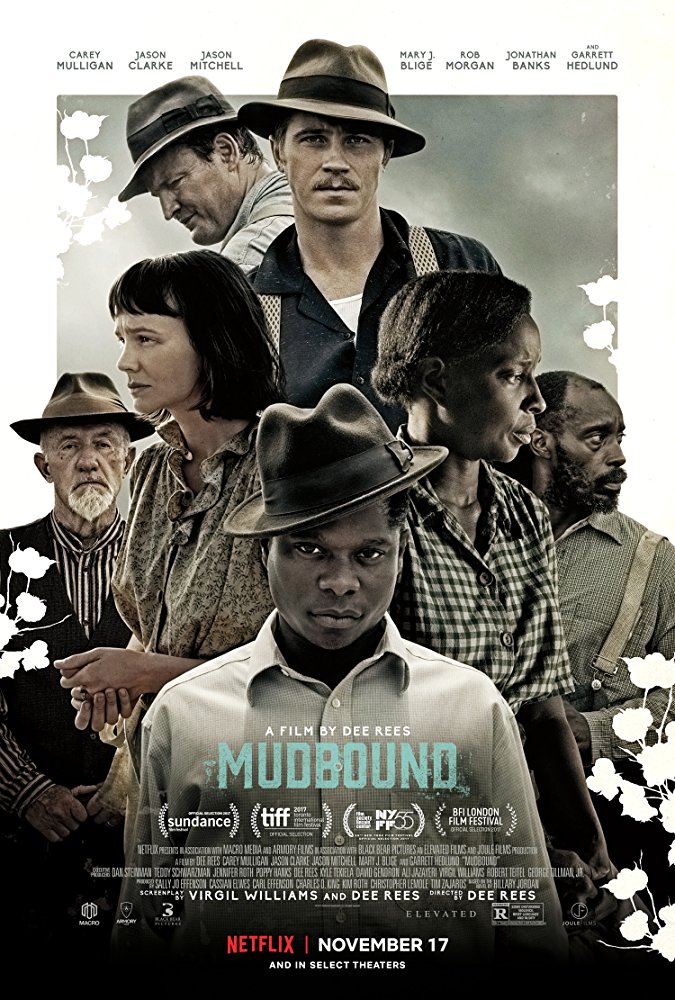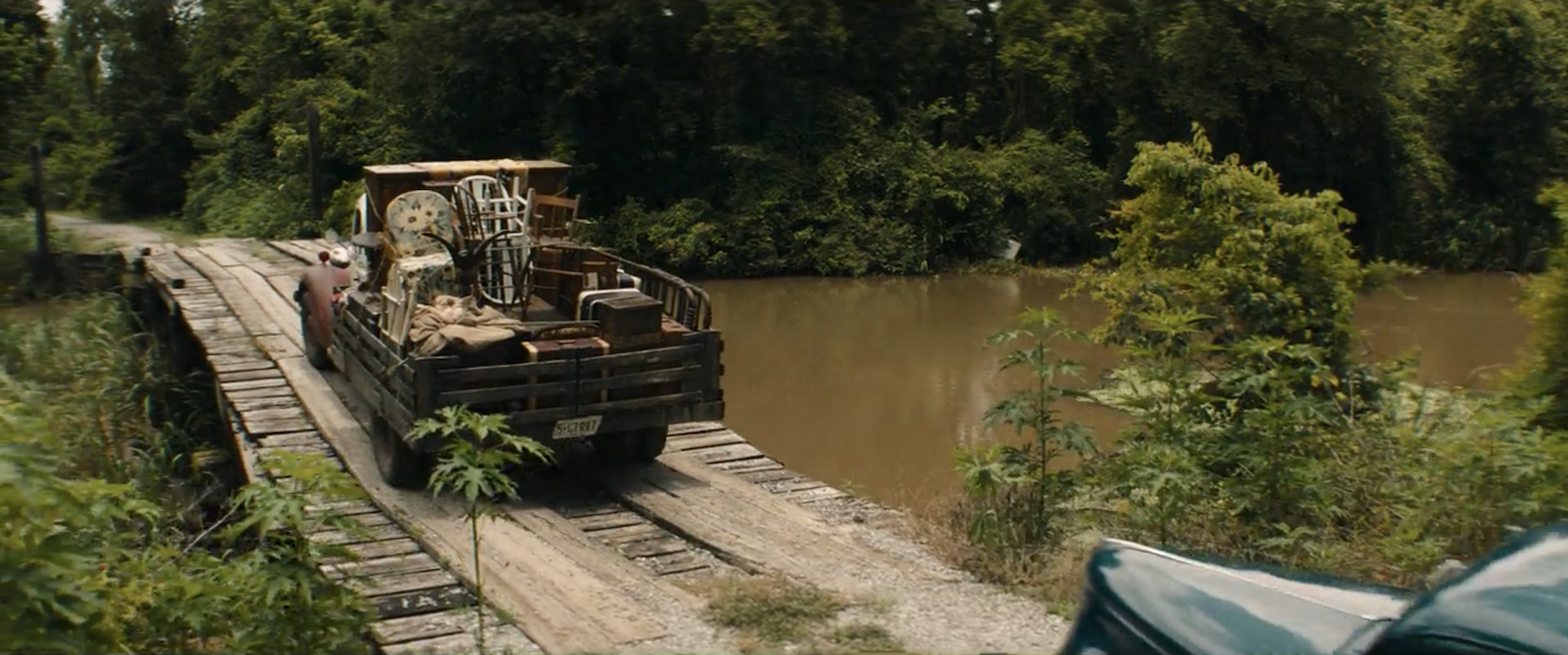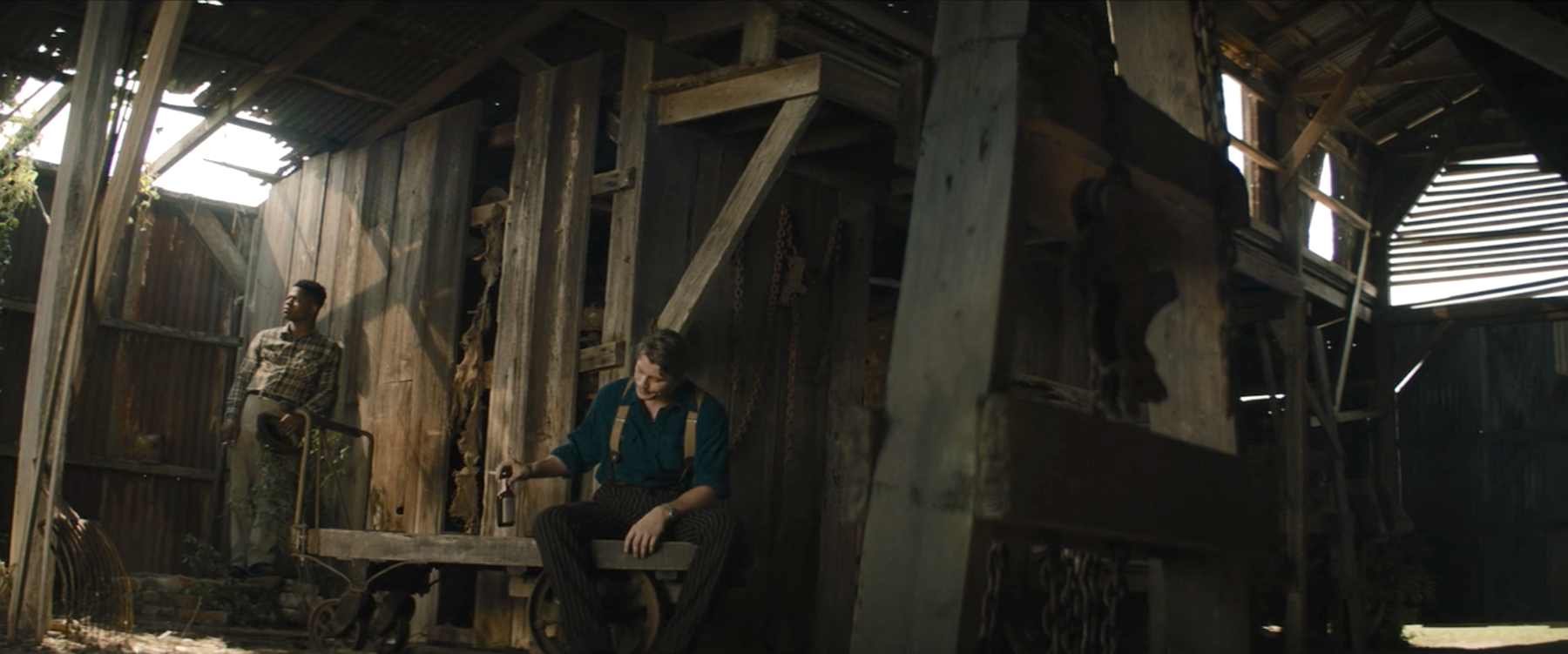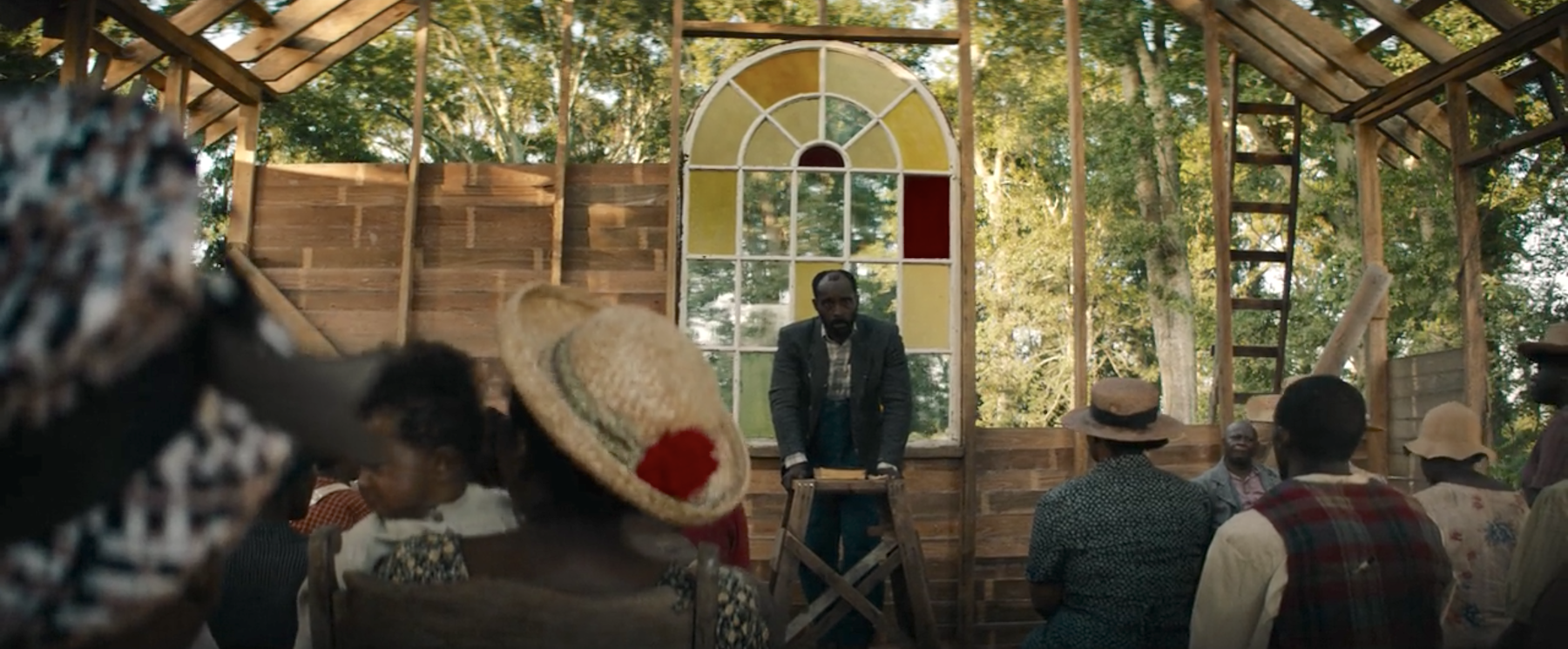"The Furniture," by Daniel Walber, is our weekly series on Production Design. You can click on the images to see them in magnified detail.
 “I dreamed in brown,” remembers Laura McAllan (Carey Mulligan), surveying the near-monochrome dirt of a Mississippi farm. This small pocket of land is owned by her husband, Henry (Jason Clarke), but one doesn’t get much of a sense that she’d call it home. He appears not to like it either, but is motivated by a sour sense of duty. Perhaps this is why his agricultural efforts fail, barely introducing any green into this expanse of brown.
“I dreamed in brown,” remembers Laura McAllan (Carey Mulligan), surveying the near-monochrome dirt of a Mississippi farm. This small pocket of land is owned by her husband, Henry (Jason Clarke), but one doesn’t get much of a sense that she’d call it home. He appears not to like it either, but is motivated by a sour sense of duty. Perhaps this is why his agricultural efforts fail, barely introducing any green into this expanse of brown.
Even more obvious, when it comes to metaphors, is the way Mudbound begins. Dee Rees opens her earthbound epic on Henry in the dirt, digging a grave. The deceased is his Pappy (Jonathan Banks), an acrimonious Klan member who has done his utmost to pass his ideology down to his sons. It’s largely worked on Henry. Jamie (Garrett Hedlund) resists, but still winds up digging in the mud.
At the bottom of this new ditch, Henry finds a skull. It’s a “slave’s grave,” he declares; he can tell by the bullet-hole. It’s a hint at an old story, one that Rees knows she needn’t bother put into words...
It’s not difficult to guess. So bound by the white supremacist ideology of his father, Henry begins and ends in the mud, excavating this intransigent violence.
As such, the charge of production designer David Bomba isn’t terribly flashy. The farm buildings all have roughly the same impact. The most memorable feature might be the rickety bridge, a fragile lifeline to the general store and the town doctor. This place is as isolated as it is miserable.
The farm is stuck. Henry’s farming style is the same as that of his ancestors: rely on the sweat of others. Hap Jackson (Rob Morgan) and his family have been tilling this land for generations. Once slaves, now they are share-croppers. Henry even forces Hap to rent a mule to do his work, further binding him financially to this earth. Once upon a time, the promise of Reconstruction would have had the Jacksons owning this land themselves. Instead, they barely get by as employees of a man with little expertise or vision.
Yet in the opening burial scene, the Jackson family is on their way to a different life. The circumstances are kept vague, but the image is planted. Hap, Florence (Mary J. Blige) and their children are leaving, perhaps to a place with more promise. The film’s one prominent metaphor of set design helps illustrate this point.
While Henry and his family push down, in the loop of gravedigging, Hap and his children build upward. Ronsel (Jason Mitchell), finally returned from the war, takes Jamie to his favorite place in town. It’s not much to speak of, really, an abandoned structure with holes in the roof. But it also has a refreshingly high ceiling, and its lines are much more engaging to the eye than the dour houses and barns of the farm.
This space underlines Ronsel’s inability to settle into this miserable landscape of hatred and violence, especially in the wake of his experience as a tank commander in Europe. It is a symbol of his restlessness and ambition, which will not fit into the cramped shacks of this rural nightmare.
Another architectural metaphor is even more affecting. Hap is also a preacher. He leads prayer in a makeshift church, forever in a state of partial construction. The wood panels appear to be slowly climbing the walls, one plank at a time. None have yet made it to the roof. The windows are not yet glazed, but the multicolored panels occupying some of the gaps suggest the colors of stained glass.
This church-in-progress has an energy of its own, aspirational and communal. Hap and his parishioners possess a will to grow, exactly the sort of energy that Henry McAllan lacks. His farm languishes in its muddy browns because its owner lives by the stubborn rules of the past and present, sticks buried in the mud. The Jacksons are building in an entirely different direction, upward and finally outward.

Previous 2017 films featured:
• Atomic Blonde Neon nihilism
• Beatriz at Dinner tacky mansion
• The Beguiled a plaster haze
• Colossal Hoarding and emptiness
• Frantz Decorating for a lost generation
• Get Out Beige house of colonial horrors
• King Arthur reframing the legend
• Personal Shopper framing the unseen
• A Quiet Passion floral punctuations
• The Lost City of Z deranged ambitions, indulgent fantasies



